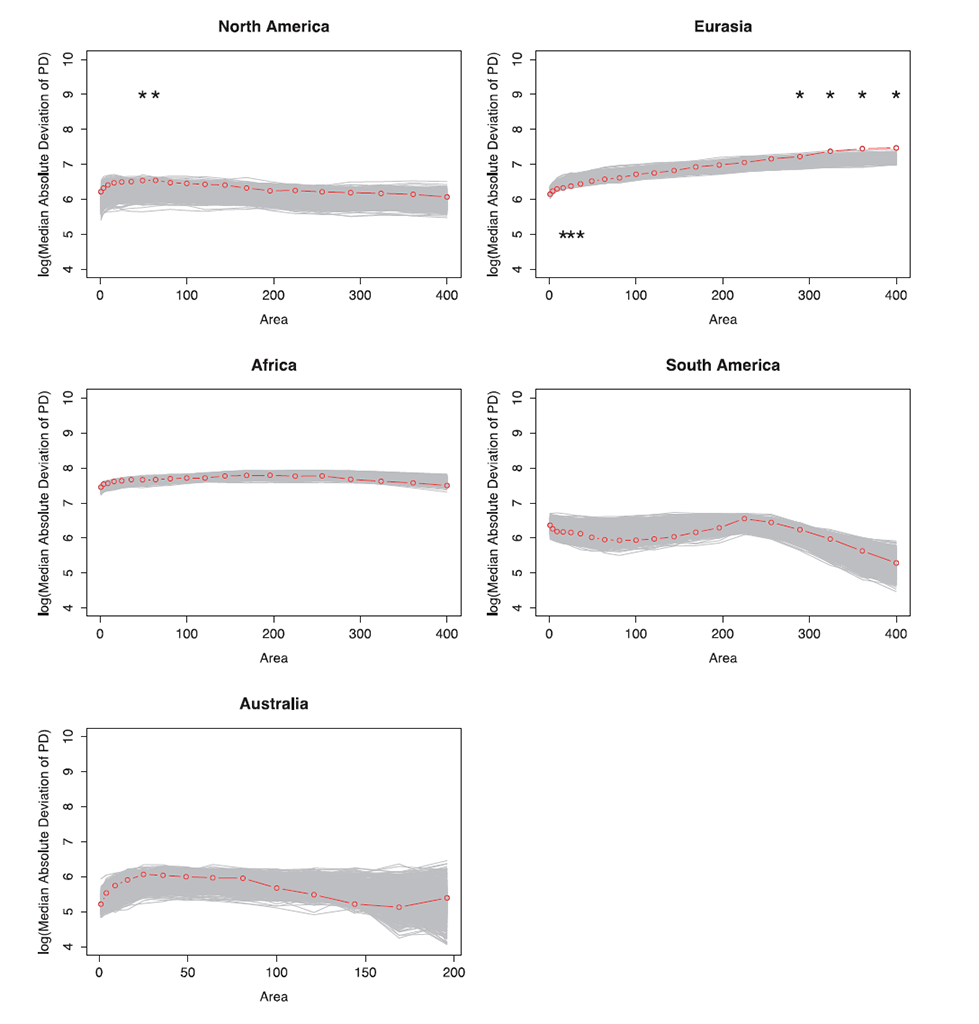
Ecological Archives E096-246-A9
Florent Mazel, Julien Renaud, François Guilhaumon, David Mouillot, Dominique Gravel, and Wilfried Thuiller. 2015. Mammalian phylogenetic diversity—area relationships at a continental scale. Ecology 96:2814–2822. http://dx.doi.org/10.1890/14-1858.1
Appendix I. Null and observed Median absolute deviation (MAD) of PDARs.
For each continent, the envelope corresponding to 100 null continental MAD PDARs is shown in gray while the observed MAD PDARs are shown in black. * indicates p value above 0.975 or below 0.025.

Supplementary Discussion
For Eurasia, lower MAD than expected for small area is probably the result of the strong clustered pattern found for median PDARs at small spatial scales. Most of small areas are highly clustered and thus we observed a relatively low MAD. On the contrary, the continental null model shuffles species across the whole continent and implies that some pixels will have relatively high PD (over-dispersion) and others will have relatively low PD (clustering), leading to high null MAD.
Higher MAD than expected for large areas could be due to the fact that very large moving windows will cover only one of the biogeographic realms (thus leading to relatively low PD) or either will cover several ones (thus leading to relatively high PD), overall leading to a higher MAD than expected by the continental null model.